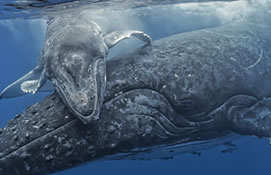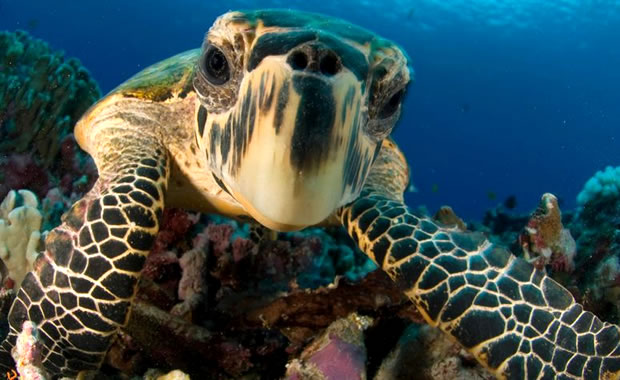Creature Profile
The gray whale is found in the Pacific ocean and is the most coastal species of baleen whales (that can be found off coastal shores). The average length of adult gray whales is 45 feet, and the average weight is 35 tons. Females are larger than males. These whales can swim speeds of up to 9 km/hr. Their skin is mottled gray and contains white, yellow or orange patches/growths due to whale lice and patches of larvae (called barnacles) attached to their skin.
The gray whale prefers to eat gammarid amphipods, but can also eat, isopods, polychaete worms, mollusks, and other invertebrates. Gray whales have been seen alone and in groups of up to 16. This species has one of the longest annual migrations of any mammal. Migrations start in September as they begin to go south to winter locations along Baja California and Mexico. Between February and May, they migrate north to feed in the Bering, Chuckchi and western Beaufort Seas. Little is known about their reproductive behavior, but mating can occur year round. The female gives birth to one calf after an estimated 13-month gestation period.
The main cause of decline is whaling back in the 1700s. The gray whale is now protected and whaling has been ceased on and off since the 1900s resulting in a slight recovery, but the whale is still sought after for its oil, meat, hide, and baleen.
Wikipedia Article

|
Wikipedia Article Copyright Notice: This article is licensed under the GNU Free Documentation License. It uses material from the Wikipedia article "Gray whale". |
More Links about the Gray Whale:
Reference Links:Gray Whale - Wikipedia
Gray Whale - Animal Diversity Web
May 11, 2017
Glenn, C. R. 2006. "Earth's Endangered Creatures - Gray Whale Facts" (Online). Accessed 4/19/2024 at http://earthsendangered.com/profile.asp?sp=930&ID=10.
Need more Gray Whale facts?




